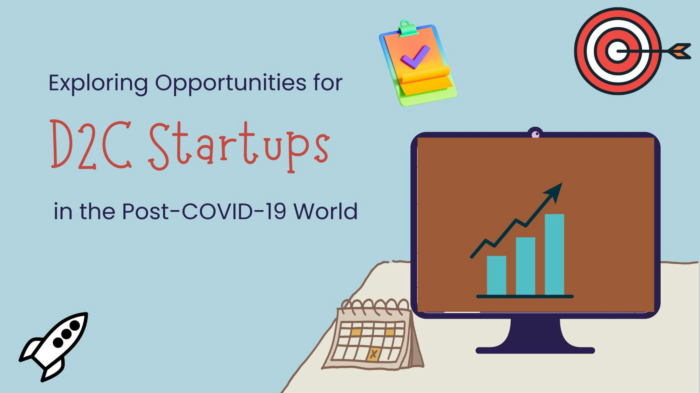Introduction to Digital Marketing
Digital marketing encompasses a variety of strategies and techniques that utilize digital channels to promote products and services. In today’s business landscape, digital marketing has emerged as a vital component, enabling organizations to engage with their target audiences effectively. The significance of digital marketing lies in its ability to adapt to the ever-changing consumer behavior, influenced by the widespread use of the internet and mobile devices. Traditional marketing methods, which primarily relied on print and broadcast media, have become less effective in reaching consumers who increasingly prefer digital interactions.
The transition from traditional marketing to digital methods has allowed businesses to tap into vast online platforms, providing opportunities for broader audience engagement and increased reach. Digital marketing strategies, such as search engine optimization (SEO), social media marketing, content marketing, email marketing, and pay-per-click advertising, enable businesses to connect with potential customers where they spend most of their time—online.
By establishing a robust digital presence, companies can showcase their products and services to a global audience. This not only enhances brand visibility but also facilitates direct consumer engagement through interaction and feedback. Furthermore, the ability to analyze online consumer behavior through data analytics allows businesses to tailor their marketing strategies effectively, ensuring that they resonate with their target demographics.
As consumers continue to gravitate towards digital channels, the importance of digital marketing cannot be overstated. It serves as a bridge that connects brands with their audiences, providing avenues for increased engagement and potential sales growth. In conclusion, embracing digital marketing is essential for businesses seeking to thrive in the competitive online marketplace, fostering long-term customer relationships and driving overall success.
Understanding Your Target Audience
In today’s competitive digital landscape, comprehending your target audience is paramount for effective marketing strategies. Audience segmentation is the process of dividing your potential customers into distinct groups based on shared characteristics. This segmentation allows businesses to better tailor their marketing efforts, addressing the unique preferences and behaviors of each segment, ultimately leading to enhanced engagement and conversion rates.
To begin identifying your target market, businesses can utilize various tools and techniques. Surveys and questionnaires can provide critical insights into consumer preferences, while analytics tools, such as Google Analytics, can help track online behavior patterns. Social media platforms also offer valuable data about user demographics and interactions, helping businesses understand their audience on a deeper level. Leveraging these resources allows companies to create detailed customer personas, which are fictional representations of ideal customers. These personas help in forming an emotional connection and make the marketing message more relevant and compelling.
Another effective method for understanding consumer behavior is conducting focus groups or interviews. These qualitative approaches provide in-depth feedback, revealing the motivations and challenges faced by potential clients. By analyzing this information, businesses can identify market gaps and opportunities, allowing them to shape their digital marketing strategies more effectively.
It is also essential for businesses to remain adaptable to changing consumer preferences. The dynamic nature of online marketplaces necessitates ongoing research and analysis. Utilizing feedback and performance metrics will enable companies to iteratively optimize their marketing strategies and ensure they resonate with their audience. Ultimately, understanding your target audience is a critical step in enhancing overall reach and sales in the digital realm.
Building an Effective Online Presence
In today’s digital landscape, establishing a strong online presence is critical for businesses aiming to thrive and grow. The foundation of this presence is a well-designed website that serves as the central hub for information, products, and services. A professional website not only reflects the brand’s identity but also facilitates user interaction. The layout should be intuitive, making it easy for visitors to navigate, access information, and ultimately convert into customers.
Moreover, user experience (UX) should be prioritized in the website’s design. This includes optimizing loading times, ensuring mobile responsiveness, and creating clear calls to action. By providing a seamless experience, businesses can retain visitors and encourage longer browsing sessions, which can lead to increased sales opportunities. A well-optimized website generates organic traffic, making search engine optimization (SEO) an indispensable strategy. Implementing effective SEO techniques involves optimizing on-page elements, such as meta tags, headings, and content, as well as off-page strategies including link-building and social signals to enhance the website’s visibility in search engine results.
Additionally, brands must leverage social media platforms to foster a deeper connection with their audience. Creating profiles that align with the brand’s identity allows businesses to engage directly with their customers, share relevant content, and promote products or services. Active participation on these platforms fosters community and encourages user feedback, which can be instrumental in refining products and improving customer service. Furthermore, social media also serves as an avenue for targeted advertising, enabling businesses to reach specific demographics effectively.
In summary, building an effective online presence involves a combination of a well-designed website, an emphasis on user experience, SEO integration, and active engagement on social media. Together, these elements create a robust platform that enhances reach and drives sales in the fast-evolving online marketplace.
Leveraging Social Media for Engagement
In the current digital landscape, social media has emerged as a pivotal tool for businesses to connect with their audiences, enhance brand visibility, and drive sales. Platforms such as Facebook, Instagram, Twitter, and LinkedIn each possess unique characteristics that businesses can exploit to foster engagement with their target demographics. Understanding the nuances of these platforms is essential for developing an effective digital marketing strategy that resonates with users.
To successfully harness the power of social media, businesses should prioritize authentic content creation tailored to their audience. This includes high-quality visuals, engaging videos, and informative articles that facilitate interaction. For instance, on Instagram, visually compelling stories and posts can capture attention and encourage followers to share content, thus amplifying reach. On the other hand, Twitter’s fast-paced environment demands concise and captivating tweets that can spark conversations.
Community building is another critical aspect of leveraging social media. Businesses can create an inclusive online community by encouraging dialogue and interaction among followers. This can be achieved through various strategies, such as hosting webinars, conducting Q&A sessions, or initiating hashtag campaigns that invite user-generated content. By promoting a sense of belonging and loyalty, brands can establish lasting relationships with their customers.
Moreover, efficient customer interaction is vital for enhancing engagement. Social media platforms offer direct channels for customers to communicate with brands, thus enabling real-time feedback and support. Promptly responding to comments and messages demonstrates a brand’s commitment to customer service and can significantly enhance overall customer satisfaction. Integrating these elements into a comprehensive social media strategy can lead to increased brand loyalty and ultimately drive more sales.
Content Marketing Strategies
Content marketing has emerged as a vital strategy for businesses aiming to attract and retain customers in the digital age. By delivering valuable and relevant content, companies can effectively engage their target audiences and foster long-term customer relationships. It encompasses various formats, including blogs, videos, infographics, and social media posts, each serving a unique purpose in audience engagement.
Blogs are a foundational element of content marketing, allowing businesses to share insights, industry news, and expert opinions. High-quality blog posts can drive organic traffic, enhance search engine visibility, and establish a brand as an authority in its field. By integrating specific keywords related to the company’s offerings, blogs can capture the interest of prospective customers and guide them through the decision-making process.
In addition to written content, videos have gained significant traction as a preferred medium for consumption among users. They can convey complex information more succinctly while also encouraging higher levels of engagement. Businesses can leverage video marketing through tutorials, product demonstrations, or customer testimonials. This visual format not only retains viewer attention but can also enhance brand recall and promote sharing across social platforms.
Infographics serve as another impactful format, effectively summarizing information and presenting data visually. They can simplify complex ideas, making it easier for audiences to comprehend and retain information. Crafting infographics that are visually appealing and informative encourages organic sharing, extending a brand’s reach.
Creating content that resonates with the target audience requires continuous analysis of preferences and behaviors. Businesses should prioritize the generation of relevant and consistent content that addresses the needs and interests of their audience. By doing so, they can enhance customer engagement, ultimately driving higher conversion rates and improving overall sales performance.
Email Marketing Campaigns
Email marketing continues to be one of the most effective digital marketing strategies. It allows businesses to reach their target audience directly, fostering engagement and driving conversions. To develop a successful email marketing campaign, various strategies can be implemented, starting with list building. Building a quality email list is crucial; businesses can achieve this through sign-up forms on their websites, special offers, and utilizing social media platforms to encourage subscriptions. Opt-in processes ensure that the audience is genuinely interested, leading to higher open and click-through rates.
Once a list is established, the next step involves creating engaging content tailored to the audience. The content of the email should be relevant, visually appealing, and contain a clear call-to-action (CTA) that guides recipients towards the desired action, whether it be making a purchase, signing up for an event, or exploring additional resources. Personalization is also key; using the recipient’s name and segmenting the list based on user behaviors or preferences can significantly enhance engagement levels.
Another effective component of email marketing campaigns is automation. Utilizing marketing automation tools can streamline the process, allowing businesses to send timed emails based on user interactions. For instance, welcome emails can be automated for new subscribers, nurturing leads and establishing a connection from the outset. Additionally, follow-up emails can be scheduled post-purchase, which not only encourages repeat business but also enhances customer relationships.
To optimize the results of email campaigns, it is essential to analyze their performance regularly. Key metrics such as open rates, click-through rates, and conversion rates provide vital insights into what works and what needs adjustment. A/B testing can be employed to refine email elements like subject lines, content formats, and sending times. By consistently evaluating and tweaking email marketing strategies, businesses can enhance their effectiveness and ultimately improve their overall digital marketing outcomes.
Utilizing Pay-Per-Click Advertising
Pay-per-click (PPC) advertising represents a powerful strategy for businesses aiming to enhance their online visibility and increase sales in today’s competitive digital landscape. Essentially, PPC is an online advertising model where advertisers are charged each time a user clicks on one of their ads. One of the primary platforms for PPC is Google Ads, which allows businesses to reach potential customers through search engine results. Additionally, various social media platforms offer targeted advertising options, making it possible to connect with specific demographics and interests effectively.
To begin with, selecting the right platform is crucial. Google Ads provides a comprehensive reach, targeting users based on relevant search queries. Conversely, platforms like Facebook and Instagram allow for far more nuanced audience segmentation, focusing on users’ behaviors, interests, and demographics. These targeting options ensure that the right advertisements are seen by the most relevant audiences, thereby increasing the potential for clicks and conversions.
Budgeting effectively is also a significant aspect of running successful PPC campaigns. Businesses should first determine their overall advertising budget and then allocate funds across different campaigns and platforms based on performance metrics. It is essential to monitor key performance indicators (KPIs) such as click-through rates (CTR), conversion rates, and return on ad spend (ROAS). By analyzing these metrics, businesses can make informed adjustments to their campaigns, optimizing both cost and effectiveness.
Moreover, experimenting with ad copy, visuals, and calls to action can enhance engagement. A/B testing different versions of ads can yield insights into what resonates best with the target audience, further improving PPC performance. Overall, when implemented strategically, PPC advertising can significantly boost online visibility and drive sales growth for businesses in the digital marketplace.
Tracking and Analyzing Performance Metrics
In the realm of digital marketing, tracking and analyzing performance metrics is paramount for businesses aiming to enhance their reach and ultimately boost sales. Key performance indicators (KPIs) serve as essential benchmarks that provide insight into the effectiveness of various digital marketing strategies. By focusing on these metrics, businesses can gain an understanding of what works and what requires adjustment in their marketing approach.
Among the most critical KPIs to track are website traffic, conversion rates, return on investment (ROI), and customer engagement levels. Monitoring website traffic can help businesses identify trends in user behavior, while conversion rates reveal the percentage of visitors who complete a desired action, such as making a purchase or subscribing to a newsletter. Calculating ROI allows businesses to evaluate the financial effectiveness of their marketing campaigns, enabling informed decisions about resource allocation. Furthermore, engagement metrics, such as time spent on site and social media interactions, provide valuable insight into customer preferences and behaviors.
To effectively monitor these KPIs, businesses can utilize various analytical tools. Platforms like Google Analytics offer comprehensive data about website performance, user demographics, and traffic sources. Social media analytics tools, such as Facebook Insights and Twitter Analytics, allow for evaluation of engagement and reach across social platforms. Utilizing these tools can help businesses interpret data and make informed decisions regarding their digital marketing strategies.
In conclusion, the tracking and analyzing of performance metrics are essential components of an effective digital marketing strategy. By regularly monitoring these KPIs through the use of analytics tools, businesses can refine their approaches, optimize their marketing efforts, and ultimately drive greater success in the online marketplace.
Future Trends in Digital Marketing
In an increasingly digital landscape, businesses must stay abreast of the latest trends in order to effectively enhance their reach and bolster sales. One of the most significant future trends in digital marketing is the rise of artificial intelligence (AI). AI technologies are transforming how brands interact with consumers, allowing for personalized experiences and targeted advertising. Through data analysis and machine learning algorithms, businesses can predict customer behavior and tailor their marketing strategies accordingly, ultimately leading to more effective engagement.
Another trend gaining momentum is influencer marketing, which leverages the reach and credibility of social media influencers to promote products and services. As consumers become more discerning, they are likely to trust recommendations from influencers over traditional advertisements. Thus, businesses can cultivate partnerships with influencers to tap into their audiences, creating authentic connections that can drive brand loyalty and conversions.
Additionally, voice search optimization is becoming crucial as more consumers use voice-activated devices for browsing and shopping. As a result, businesses must rethink their SEO strategies to accommodate this shift in search behavior. Utilizing long-tail keywords and natural language processing can help brands adapt content for voice search, ensuring they remain visible to potential customers.
The convergence of these digital marketing trends underlines the importance of continuous adaptation to meet evolving consumer preferences. As AI, influencer marketing, and voice search optimization continue to shape the future, businesses that proactively embrace these innovations will not only enhance their online presence but also effectively engage with their target markets. By staying informed and agile in their marketing strategies, brands can maintain their competitive edge in the ever-changing digital ecosystem.
How useful was this post?
Click on a star to rate it!
Average rating 0 / 5. Vote count: 0
No votes so far! Be the first to rate this post.

















